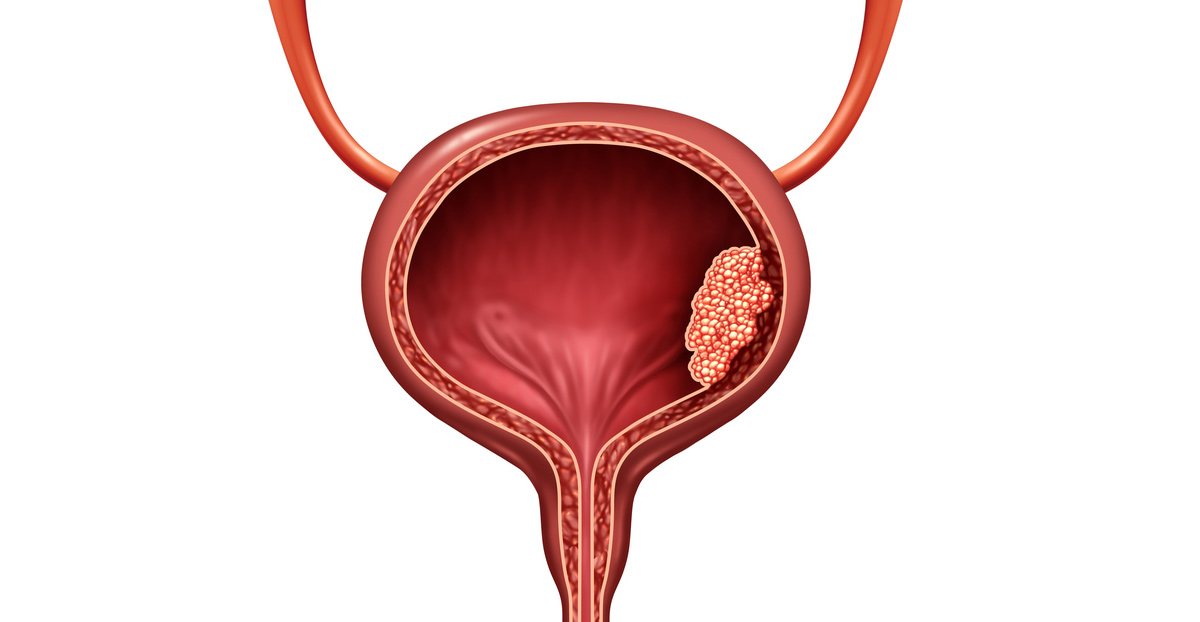

Patients with bladder cancer that has progressed beyond treatment with immunotherapy instillation may need a radical cystectomy in order to remove the bladder and tumor and stop the cancer from progressing.
During cystectomy, the surgeon will remove the bladder, part of the urethra and nearby lymph nodes. A radical cystectomy performed on male patients will include the removal of the prostate and seminal vesicles. A radical cystectomy performed in women in some cases will involve removing the uterus, ovaries and part of the vagina.
A cystectomy may be performed through open or minimally invasive robotic surgery. During open surgery, a single incision on the abdomen is made to provide access to the pelvis and bladder. If patients choose to undergo minimally invasive surgery, the surgeon will make several small incisions on the abdomen and use the robotic platform access the abdominal cavity with greater precision and enhanced visualization.

How it Works
Once a patient has received general anesthesia and has fallen asleep, the surgeon makes the necessary incision(s) and removes the bladder, nearby lymph nodes and other organs, depending on the gender of the patient.
Next, the surgeon will reconstruct the urinary tract. There are three options for accomplishing this:
1. Illeal conduit
A section of the small intestine is used to create a tube that attaches to the ureters and connects the kidneys to an opening in the abdominal wall. The patient will wear a bag on their abdomen that sticks to the skin and collects urine that needs to be manually drained.
The advantages of the illeal conduit procedure, compared to other options, include:
- Less surgical time
- Less complex
- No need to use a catheter
Disadvantages include:
- Change in body image
- Requires the use of an external bag to collect urine, which may leak or emit foul odors
- Possibility of infections, stone formation and even organ damage
2. Neobladder reconstruction
A section of the small intestine is used to create a sphere-shaped pouch that will serve as a new bladder. The new bladder is placed in the same location as the original bladder and is attached to the ureters and urethra. The urine will drain from the kidneys and allow the patient to urinate as before.
Patients who undergo a neobladder reconstruction may need to use a catheter to properly empty the neobladder. Some patients may experience urinary incontinence after surgery.
The advantages of neobladder reconstruction include:
- The process of urination is relatively unchanged
- No need for a stoma
The disadvantages are:
- Longer surgery time, compared to the ileal conduit procedure
- Urinary incontinence is normal after surgery and might last up to six months
- One in 5 patients are incontinent at night and five percent to 10 percent are incontinent during the day and have to wear a pad
- Patients may need to occasionally, or even permanently, use a catheter
- Learning how to void by val-salva
- Risk of stones and infection
3. Continent urinary reservoir
During this procedure, a piece of the intestine is used to create a small reservoir within the abdominal wall. Urine is collected in the reservoir and a catheter is used to drain it several times a day. Sometimes patients may experience leakage from the catheter site, leading to problems that may require additional surgery.
The advantages of the continent urinary reservoir procedure include:
- Minimal to no odor
- No requirement of an external bag
- Minimal risk of leaking urine
- Urine is stored in the reservoir in the body until it is emptied
- The stoma can be covered with an adhesive bandage
The disadvantages are:
- Longer surgery, compared to the ileal conduit
- Requires the use of a catheter every four hours
How to Prepare for a Cystectomy
Before a cystectomy, the patient’s doctor will discuss any changes that may need to be made to the patient’s diet. Patients may need to adjust or limit their intake of caffeine, alcohol or other drugs. It is recommended that patients quit smoking before surgery, as smoking increases the risk of complications.
